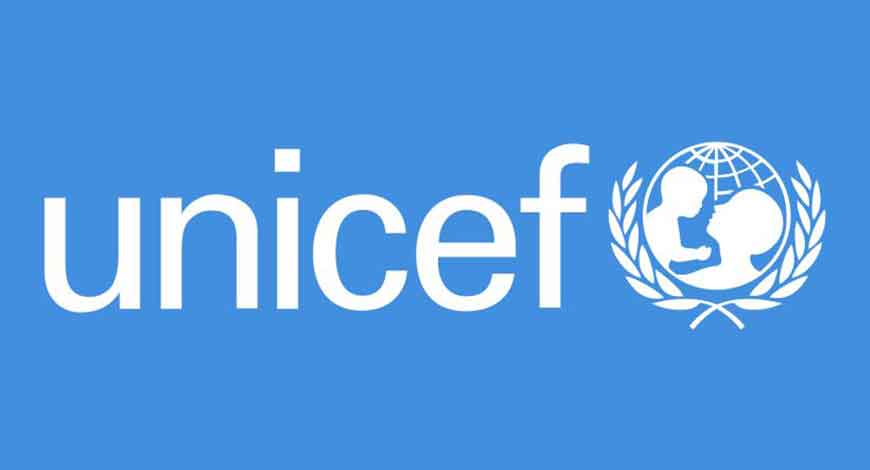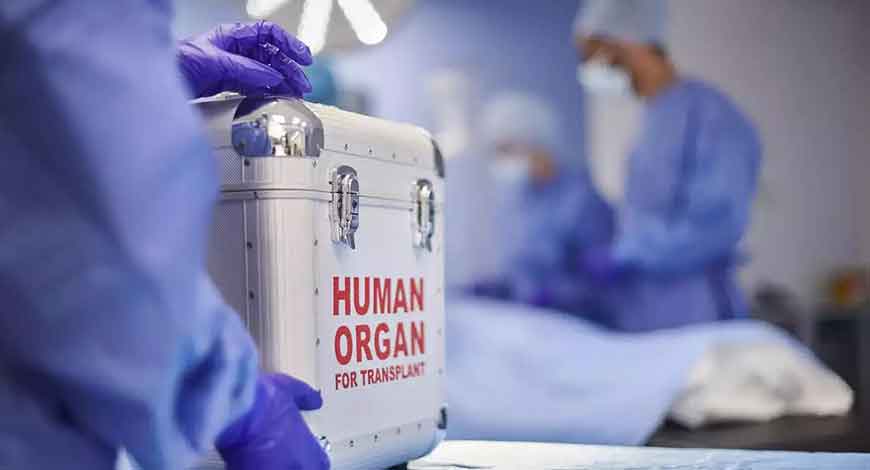Private Hospitals and Dialysis Centres in Jammu and Kashmir, empanelled under Ayushman Bharat PMJAY scheme, are facing an unprecedented crisis and are on the brink of collapse due to delayed payment of bills by J&K State Health Agency (SHA).Hospital owners said that despite repeated assurances, pending dues have mounted to 100’s of crores, making it increasingly difficult for healthcare providers to sustain their operations.Since March 2024, SHA has been delaying payments to empanelled hospitals and dialysis centres, leading to a crisis-like situation. Last year, private hospitals and dialysis centre owners protested by stopping medical services under the scheme.However, after the intervention of the High Court of Jammu & Kashmir and Ladakh, a significant amount of pending money was released. However, they said the gap in payment of pending dues has widened over time.The hospital owners said they are not receiving payments continuously, and if at all, it’s in piecemeal fashion. “We are not able to pay our vendors, who have now threatened to stop the supply of consumables. The government does not honour the agreement for timely payments to run the scheme successfully,” they said.While some partial payments were made, they were often accompanied by substantial, unwarranted deductions, highlighting the critical issue of timely payment and the need for government action to address the situation.“If the government cannot run the scheme due to the paucity of funds, let them make it public instead of crushing the hospitals due to delayed payment of bills,” they said.Notably, SHA J&K shifted to a new policy (PS8) under AB-PMJAY and AB-PMJAY SEHAT on Trust Mode from April 17, 2025. However, none of the hospitals have received payment under the new scheme, in addition to a significant amount of pending payment from the old scheme (PS7).Previously, the SHAJK blocked four surgical procedures for private hospitals, effective from March 15, 2025, citing their misuse in private hospitals. These procedures are now reserved exclusively for public hospitals.J&K is among the few states in India where 100 per cent of the population is covered under the Ayushman Bharat Scheme. The reservation of four procedures to public hospitals has significantly affected the Below Poverty Line (BPL) population, who now have to wait for months for surgery in public hospitals or arrange money for surgery in private institutions.The hospitals and dialysis centre owners urged the government to take steps to clear the pending dues and ensure the sustainability of healthcare services, which concerns precious human lives and was the brainchild of the Prime Minister of India. Rising Kashmir
Category: Medical
-

47 Korean Hospitals adopt National EMR
South Koreans can soon access their medical records from big hospitals via the mobile Health Information Highway (My Healthway) application.
This month, the Ministry of Health and Welfare is set to complete the linking of all 47 tertiary general hospitals in the country to My Healthway.
The mobile app allows Koreans to view their diagnoses, imaging and pathology results, medications, allergies, and surgical records, as well as manage health checkup results and their children’s immunisation schedules. It also provides live information on nearby 24-hour hospitals and pharmacies.
By the end of August, the government expects to have connected 1,264 healthcare settings, including general hospitals and clinics, to the national health record system. Healthcare IT News
-

Trump’s cuts put rural hospitals at risk of billions in losses
Rural hospitals are preparing to lose billions of dollars from President Donald Trump’s signature tax and spending cut bill signed into law this summer.
Dozens, already on the brink, have warned they face the prospect of closure or reduced services because of the bill’s cuts to Medicaid, which is funded by federal and state governments and provides health care coverage for the poorest Americans.
At a cabinet meeting Tuesday celebrating working Americans, Health and Human Services Secretary Robert F. Kennedy Jr. asserted that a historic “ infusion of cash ” is on the way for rural hospitals throughout the country.
“Right now we spend 7% of Medicaid dollars on rural hospitals,” he said. “They’re getting the short end of the stick.” To address that, he said a new fund — established in the legislation — will give rural hospitals an extra $10 billion every year. AP News
-

Carlsmed Q2 Revenue Doubles to $12.1M
Carlsmed, Inc. reported financial results for the second quarter ended June 30, 2025.
“Our strong commercial performance was driven by the continued adoption of our highly differentiated AI-enabled aprevo® technology platform and growing recognition of its ability to deliver more favorable patient outcomes than legacy devices,” said Mike Cordonnier, Chairman and CEO of Carlsmed. “Building upon our momentum in personalized lumbar fusion surgery, in July we successfully completed the first personalized cervical spine surgery using our aprevo® technology platform, launching in 2026. We enter the second half of 2025 well positioned for continued scale as we become the new standard of care in spine fusion surgery.”
Second quarter financial results & recent highlights
- Revenue was $12.1 million for the second quarter of 2025; a 99% increase compared to $6.1 million for the second quarter of 2024. This increase was driven by the increased number of surgical procedures utilizing the aprevo® technology platform in the second quarter of 2025, with average revenue per procedure flat between these periods.
- Gross profit for the second quarter of 2025 was $8.9 million compared to $4.6 million for the second quarter of 2024, due to our increased revenue. Gross margin was 73.4% for the second quarter of 2025, compared with 75.0% for the second quarter of 2024; this decrease was primarily driven by expedite production fees charged by our contract manufacturer in the second quarter to meet customer timing requirements.
- Operating expenses were $15.4 million for the second quarter of 2025, compared with $10.9 million for the second quarter of 2024.
- Research and development expenses were $4.2 million for the second quarter of 2025, compared with $4.0 million for the second quarter of 2024. This increase was primarily driven by higher personnel costs to support product development and artificial intelligence initiatives, partially offset by lower prototype and materials costs and reduced COMPASS registry costs following enrollment completion in second half of 2024.
- Sales and marketing expenses were $7.9 million for the second quarter of 2025, compared with $4.9 million for the second quarter of 2024. This increase was primarily driven by personnel additions and variable sales expenses associated with our revenue growth, as well as an increase in marketing expenses.
- General and administrative expenses were $3.3 million for the second quarter of 2025, compared with $2.0 million for the second quarter of 2024. This increase was primarily due to personnel additions to support business growth and costs associated with the transition to being a publicly traded company, including associated legal, accounting, and other professional fees.
- Net loss was $6.8 million for the second quarter of 2025, compared to a $6.3 million net loss for the second quarter of 2024.
- Adjusted EBITDA loss was $6.2 million for the second quarters of 2025 and 2024.
- Cash and cash equivalents were $33.5 million as of June 30, 2025. The Company received $93.5 million of net proceeds, after deducting underwriting discounts and commissions and before other additional offering expenses, from its initial public offering in July 2025.
- The first personalized cervical spine surgery using the AI-enabled aprevo® technology platform was performed.
- aprevo® cervical procedures received CMS New Technology Add-On Payment (NTAP) reimbursement, in effect October 1, 2025.
2025 full year financial outlook
Revenue for the full year 2025 is expected to be in the range of $45.5 million to $47.5 million, representing growth of 67% to 75% over 2024.
TheNewsBit Bureau -

Cyber risk management in medical device supply chain
The global medical device supply chain is immensely complex, accounting for billions of dollars in trade each year. With that, millions of lives depend on its swift delivery and provision of crucial medical equipment—meaning also, regrettably, that companies on the chain are at increasing risk from cyber criminals.
Managing cyber risks in the chain, however, requires businesses to be more than just careful with how they handle their own data and systems. As part of a wider, global chain, they’re at the mercy of third-party vendor practices—and so are millions of innocent consumers.
Let’s explore the current threat landscape affecting medical device supply, and how companies on the chain can better protect themselves and their customers.
Understanding the Cyber Threat Landscape in Medical Device Supply Chains
The healthcare industry remains the third most-attacked worldwide, largely due to the sensitivity of the data held and the services provided.By disrupting companies on the medical device supply chain, for example, hackers put suppliers and care providers under immense pressure to restore service as quickly as possible.
Ransomware, which locks down systems until ransom payments are made to attackers, can prevent crucial devices and support from reaching people, meaning organizations on the chain must be on high alert to prevent such extortion from taking hold.
HIMSS’ 2024 Healthcare Cybersecurity Survey explains that ransomware threats in the industry have remained steady since at least 2018—meaning that while the methodologies to handle evolving threats are improving, this type of attack is never going away.
And yet, businesses in the device supply chain must carefully consider the security postures of the vendors they work with, not just their own. Any weaknesses in vendor cybersecurity can lead to hackers intercepting communications on the supply chain, potentially finding backdoors into firms that otherwise have robust protections.
What’s more, typical cyberattacks such as phishing and social engineering take advantage of supply chain employees who lack adequate training and knowledge.
Worryingly, KLAS Research found that the majority of healthcare firms take a “when, not if” position on cybersecurity and threat response.
With generative AI making threats to the device supply chain more sophisticated, this all culminates in a stark wake-up call for businesses and vendors.
Regulatory expectations and compliance requirements
Beyond threats to customer data and operational lockdowns, businesses in the medical device supply chain also have regulatory expectations and must ensure they are adequately protected in line with compliance standards.HIPAA, the Health Insurance Portability and Accountability Act, for example, regulates healthcare businesses (including medical device users and suppliers) with regard to how they handle, protect, and store patient data.
Within medical device manufacturing itself, the U.S. Food and Drug Administration (FDA) applies specific cybersecurity guidance in line with the Consolidated Appropriations Act of 2023.
Therefore, businesses should already be aware of and following security recommendations set by regulators—and if not, should consider setting up their own security templates or frameworks, or using a pre-established framework to guide along.
Implementing a robust cybersecurity framework
The ideal cybersecurity framework and incident response plan will look different for every organization on the supply chain. However, there are key steps they can take to ensure they build a reactive, proactive framework that keeps data and operations safe, and which continues to maintain compliance.Here are a few suggested steps businesses might take to protect themselves, at least initially:
- Use a recommended security framework, such as NIST CSF. NIST CSF 2.0 is the latest version of a widely used cybersecurity template that helps businesses—such as those on the device supply chain—to ensure they follow recommended practices to protect data and operations, and to stay compliant.
- Carefully vet vendors. As mentioned above, medical device suppliers and manufacturers are frequently at the mercy of the security standards set by partners they work with. Therefore, it’s vital to hold potential new partners to account for their security measures, and to establish a framework that you can regularly revisit and reanalyze together.
- Apply zero-trust practices. An effective cybersecurity framework must never take trust for granted. Even with long-standing partners and trusted devices, firms should apply strict controls to verify connections and restrict access to data and operations unless several factors have been confirmed.
- Run regular tests and scans as part of ongoing framework reviews. Medical device firms should always run penetration tests and vulnerability scans to search for weaknesses in systems and networking that escape the naked eye. Tiny flaws such as misconfigurations can, for example, still provide backdoors to hackers.
Best practices for ongoing cyber risk mitigation
Beyond setting up a reliable, proactive cybersecurity framework, medical device manufacturers and suppliers should take regular steps to mitigate risks and prevent threats from taking hold.Here are a few best practices that supply chain firms should consider to tighten up their ongoing cybersecurity:
- Regularly refresh and rewrite contracts and agreements with vendors and partners to establish mutual security targets and auditing.
- Work with cybersecurity professionals and use threat intelligence tools to stay ahead of the latest threats with recommended software.
- Regularly top up employee knowledge on how the supply chain is connected, the risks that are involved, and how to secure data and personal access.
- Develop incident plans and backup procedures in the event of the worst-case scenario happening—run thorough, targeted risk analyses to grade how likely risks are to occur.
- Collaborate and share knowledge with other businesses and thought leaders on the supply chain—are there any practices you could take inspiration from, or any you could share with your partners?
- When using hardware such as RFID scanners and IoT devices, take care to regularly update firmware and reassess how systems are connected—according to the World Economic Forum, cyberattacks targeting IoT in particular are increasing.
Conclusion
The medical device supply chain and the wider healthcare industry are more at risk now than ever before from sophisticated hacking and cybersecurity threats. Although efforts to prevent these threats are, in turn, becoming more sophisticated, there is still plenty for businesses to do in terms of vigilance and preparedness.Take our advice and don’t make cybersecurity an afterthought—plan ahead, set up analytics and work with security professionals—and, most of all, choose vendors you can safely trust across the chain. Medical Product Outsourcing
-

Andhra launches Biodesign Innovation programme
Chief Minister N Chandrababu Naidu has announced the launch of the Bharat Biodesign Research and Innovation (BRAIN) programme in collaboration with global biodesign leaders at the Ratan Tata Innovation Hub in Amaravati.
The announcement followed a meeting with members of the Asia-Pacific (APAC) Biodesign Alliance, who are in India for their annual summit. The delegation included representatives from the USA, Australia, Israel, Taiwan, Japan, Ireland and Singapore.
The discussions centred on advancing healthcare innovation, medical technology, and entrepreneurial capacity building in India, with a special focus on positioning Andhra Pradesh as a hub for next-generation health technology solutions.
Naidu interacted with Dr Rakesh Kalapala, President of the AI & MedTech Alliance Foundation, Prof Anurag Mairal of Stanford Biodesign, and Naresh Kumar Pagidimarry, Director of Bharat Biodesign. The dialogue culminated in the launch of the Bharat BRAIN initiative, to be spearheaded by the AI & MedTech Alliance Foundation in collaboration with the APAC Biodesign Alliance and Stanford Biodesign, USA.
“The Bharat BRAIN programme will not only bring the best of global health innovation to Andhra Pradesh but also create local solutions that can be scaled across India and emerging markets,” Naidu said.
The initiative aims to make AP a hub for global health technologies and digital health innovation, with a strong focus on preventive healthcare. The New Indian Express
-

US hospitals brace for uncertain future
Health system CEOs in Cleveland and across the country are facing numerous questions without clear answers, as they look ahead to the effects of the One Big Beautiful Bill Act, according to Becker’s Hospital Review.
In July, Congress passed nearly $1 trillion in Medicaid cuts over 10 years as part of President Donald Trump’s signature bill. The cuts could leave an estimated 11.8 million Americans without insurance, forcing hospitals to absorb more costs that were previously covered by Medicaid, according to analysts at UC Berkeley.
Proponents of the legislation argue the cuts will reduce fraud and ensure that only eligible individuals receive coverage. Critics warn hospitals will face mounting unpaid bills and may have to reduce services.
The severity of the financial hit on hospitals depends on several factors, including state policy, relationships with health insurance companies, local market forces and other factors, Becker’s said.
Some hospitals may use the One Big Beautiful Bill Act to implement overdue changes, such as getting rid of underperforming departments, relying more on AI or cutting administrative posts.
More people may skip or delay getting health care because of costs, loss of health insurance or long wait times. As a result, emergency rooms may have more patients and patients who are sicker and need more expensive treatments, Becker’s said.
MetroHealth this week became the latest NE Ohio hospital to take steps to deal with the looming economic uncertainty.
MetroHealth announced Monday it will close six outpatient centers in the Cleveland area as part of an effort to stabilize its finances.
The closures, effective Friday, Oct. 3, include:
- Broadview Heights Sports Medicine and Physical Therapy
- The dental clinic at Old Brooklyn Medical Center
- Medina Health Center
- Rocky River Medical Offices
- State Road Family Practice in North Royalton
- Westlake Physical Therapy at the West Shore Family YMCA
MetroHealth said the decision follows years of expansion that created overlapping services and inefficiencies. Consolidating operations will allow the system to provide more services in fewer locations, with some facilities extending their hours and many employees relocating to larger sites.
The move comes as MetroHealth faces soaring costs for charity care, which have doubled since 2022 and now exceed $1 million per day. Officials cited ongoing operating losses, higher expenses, and uncertainty around government funding as additional financial pressures.
The system recently laid off about 125 employees, mostly in administrative roles, and continues to notify patients if their providers or appointments are being relocated.
MetroHealth said that it will still operate more than 20 outpatient sites and remains committed to serving patients.
Looking ahead, MetroHealth plans to open a new Outpatient Health Center on its main campus in 2026, along with a drive-thru pharmacy in 2027. Construction of the health center, new parking garage, and other campus renovations is expected to cost $168.2 million.
Medicaid cuts add pressure
MetroHealth ended 2024 with $50 million in operating losses and projects even larger losses in 2025. Other major Cleveland health systems are also cutting costs: Cleveland Clinic eliminated 114 administrative positions earlier this year, while University Hospitals cut more than 300 leadership roles after closing two hospitals in 2022.Although MetroHealth serves as Cuyahoga County’s safety net hospital, only part of its annual funding comes from the county. In November 2024, trustees approved a $2 billion operating budget for 2025, up from $1.9 billion the previous year. Cleveland.com
-

FDA warns 4 device makers over GLP, CGMP violations
The US Food and Drug Administration (FDA) recently warned four medical device makers for violations of good laboratory practices (GLP), current good manufacturing practices (CGMP), and for marketing a product without proper approval.
Chinese medical device company Jiangsu Kerbio Medical Technology Group was cited for failing to follow good laboratory practice (GLP) requirements in nonclinical studies, including guinea pig maximization sensitization (GPMT), acute systemic toxicity (AST), rabbit pyrogen, muscle implantation, hemolysis, and cytotoxicity tests. The company, which conducted nonclinical testing for medical devices, said it would cease FDA-related nonclinical testing for at least three years.
FDA investigators argued that the study director of the nonclinical studies failed to ensure that study protocols were approved, experimental data were accurately recorded and verified, and all GLP regulations were followed. They note that raw data from daily animal observation were not collected in certain studies as required.
The investigators also listed instances where personnel were recorded doing two activities simultaneously or using the same equipment for multiple uses, which they argue is implausible. They also noted that personnel were caught filling in records after the fact.
“On January 21, 2025, one of the FDA investigators directly observed study personnel, [redacted], retroactively completing records for an ongoing subacute systemic toxicity study, [redacted], including clinical observations and animal weight data from Day 1 of the study up to Day 26 [redacted] of the study,” said FDA. “When asked to provide documentation that animals for this study were weighed, the records provided later that day showed that the animal weight data were incomplete as week 2 only included 5 out of 20 animal weights, and there were no weights recorded for week 3 which should have been completed on [redacted].
“Failure to accurately record and verify experimental data as per the study protocol undermines the integrity and reliability of the study,” the agency added.
FDA investigators were especially concerned with the study director’s lack of management to ensure that studies were conducted, and data were collected according to protocol.
“When the protocol is not followed, data is erroneously recorded or analyzed, or other unforeseen circumstances occur that negatively affect the data, important findings in the study may be overlooked and the data cannot be accurately interpreted,” said FDA. “Failure to follow the protocol impacts the quality and reliability of data contained within the final study report.
“This adversely impacts a manufacturer’s and FDA’s ability to assess the overall safety and risk of the subject device prior to use in humans as a marketed device or for the purposes of beginning clinical trials, as applicable,” the agency added.
Based on the GLP failures, the FDA expressed concern about the quality and integrity of the data generated from the nonclinical laboratory studies and their impact on the company’s premarket submission.
FDA also cited Jiangsu Kerbio for failing to develop proper procedures to handle test and control articles and added that its Quality Assurance Unit (QAU) failed to properly inspect each nonclinical laboratory study to ensure they followed protocol.
“A reliable QAU is integral to the successful understanding and completion of any GLP study,” said FDA. “Without appropriate QAU oversight, neither the sponsor nor FDA reviewers have assurance that the data in the final study report are accurate and valid.
“Failure to perform QAU functions, such as monitoring studies to ensure protocols were followed and data are accurately recorded, over the course of multiple studies also calls into question the quality and integrity of studies conducted at your testing facility,” the agency added.
CGMP violations
Two Massachusetts-based companies, LeMaitre Vascular and Miach Orthopaedics, and Australia-based Uscom, were all cited for CGMP violations.LeMaitre was cited for failing to maintain procedures to prevent equipment contamination that could potentially affect the final product. More specifically, the company was told its procedures for handling water were inadequate to prevent contamination. It was also cited for failing to maintain procedures to control environmental conditions adequately, control process parameters for validated processes, and validate corrective and preventive action (CAPA) incidents.
Similarly, Miach was warned for failing to maintain procedures to monitor and control process parameters for validated processes and products that don’t conform to specifications. The company was also cited for failing to maintain procedures to ensure that design requirements for its products are being met and that proper steps are taken when the results of a process can’t be fully verified.
Uscom, too, was cited for CGMP violations because it failed to maintain device design validation and CAPA procedures. FDA listed several instances where the company failed to adequately investigate nonconformities related to its products, processes, and quality system.Reporting violations
In addition to the CGMP violations, LeMaitre was cited for failing to report corrections and removals of its Artegraft Collagen Vascular Graft devices.“Your firm distributed [redacted] grafts from lot 23DD203 manufactured using raw material Bovine Carotid Arteries control number [redacted] from a non‐approved supplier, one of which was implanted in a patient,” said FDA, noting that the firm recalled the devices sometime after 23 June 2023.
“Since the product was released prior to completion of the [redacted] evaluation, as required by your firm’s procedure, and without notifying the FDA of the change in the supplier of critical materials for a Class III device, this lot of material is violative,” the agency added. “Graft devices manufactured using raw material from an unapproved supplier could have compromised sterility or mechanical integrity, which may present a risk to health such as infection, aneurysm, pseudoaneurysm, rupture, or mechanical failure at the anastomosis leading to bleeding or explantation of the failed device.”
Miach was also cited for failing to maintain proper medical device report (MDR) procedures. FDA said the company did not have internal systems to ensure MDR data was recorded, reviewed, and submitted promptly. Furthermore, the agency said it failed to report adverse events within 30 calendar days as required.
Unapproved device
Uscom was cited for marketing its SpiroSonic AIR without first obtaining a premarket approval (PMA) or submitting a new 510(k). The agency noted that it currently has clearance for a different spirometer device called SpiroThor, which is also marketed as mSpiromteter or mSpiro, and is used for lung function tests in laboratory settings. The agency noted that the company has submitted premarket notifications for the SpiroSonic Air and other spirometers that are significantly different from the SpiroThor and raised concerns about their safety and functionality.“On August 16, 2022, FDA issued a Request for Additional Information Letter (AINN), explaining that FDA reviewed your K220982 submission for SpiroSonic AIR and several other spirometer devices, and determined that additional information was required,” said FDA. “The AINN letter explained that your response was due within 180 days from the date of the request and that FDA would consider the submission withdrawn and delete it from FDA’s review system if a complete response was not received by that date.
“Your firm did not respond to that letter. Accordingly, on February 14, 2023, FDA sent you a Close-Out Letter, entitled ‘Deletion of Submission for Lack of Response to Additional Information Request,’” the agency added. “The letter explained that FDA considered your K220982 submission to be withdrawn and that it had been deleted from FDA’s review system.” RAPS.org
-

UNICEF to end maintenance support for SCANU
Unicef is set to discontinue its equipment maintenance support for Special Care Neonatal Units (SCANUs) from September, a move that may disrupt lifesaving services for newborns unless the authorities act promptly, say experts and health officials.
They suggest the authorities urgently come up with a transition plan to ensure uninterrupted services, noting that the health sector is already struggling with a shortage of technical staff.
Last month, the UN agency informed the Directorate General of Health Services (DGHS) of its decision to withdraw the support it has provided over the past 12 years through a third-party provider.
Currently, SCNAUs are available at 60 hospitals across 52 districts, providing specialised support to sick and premature newborns, shows DGHS data.
Prominent paediatrician Prof Mohammod Shahidullah said that out of 30 to 32 lakh babies born in Bangladesh every year, more than three lakh or around 10 percent are premature. Besides, many children suffer from serious infections, and all of them require SCANU services.
He said the health authorities have the capacity to fill the gap left by the withdrawal of Unicef’s support, but they must develop a transition plan in consultation with the UN agency.
The Unicef decision comes at a time when a significant number of medical devices at 60 SCANUs remain out of order.
According to a DGHS assessment in mid-2024, at least 802 or 20 percent of 4,159 pieces of equipment at the SCANUs were non-functional with 209 deemed to be beyond repair.
Besides, 213 pieces of equipment were more than a decade old, said the DGHS report based on an inspection team’s findings.
UNICEF’S withdrawal, challanges
In a letter to DGHS on July 16, the Unicef Bangladesh office said, “After reviewing our progress and aligning with the new country programme direction, we regret to inform you that Unicef will no longer continue the current equipment maintenance support for SCANU and Neonatal Stabilisation units (NSU) after the end of the existing contract with the third-party provider. This contract will conclude on September 30, 2025.”The UN agency also suggested exploring government-oriented services in collaboration with NEMEMW & TC, an agency under the health ministry, for carrying out maintenance at SCANUs.
The National Electro-Medical Equipment Maintenance Workshop & Training Center (NEMEMW & TC) provides maintenance and repair services — mostly through third-party providers — for medical equipment in around 700 government hospitals across the country.
Contacted, Zainal Abedin Tito, line director of Hospital Service Management of DGHS, said the hospitals concerned were directed to take necessary steps to ensure uninterrupted services at SCANUs.
Technicians at the hospitals will carry out routine maintenance, and in case of major problems, NEMEMW & TC will assist them, he told this correspondent on August 11.
However, at least two DGHS officials said SCANU equipment is highly sophisticated and requires regular maintenance. Given the shortage of technical staff at public hospitals, Unicef’s departure may disrupt the services.
They noted that NEMEMW & TC itself, which doesn’t have divisional-level offices, is running with inadequate manpower. At least 58 of the 95 posts at the agency remain vacant.
Asked, Jayanta Kumar Mukhopadhaya, chief technical manager of NEMEMW & TC, said they have yet to receive any directive on SCANU maintenance.
“If the authorities ask us to do it, we will need some time to hire a vendor to provide the services,” he told The Daily Star on August 19.
Prof Sayedur Rahman, special assistant to the chief adviser for the health ministry, said the government has decided to maintain SCANUs with its own funds.
Funding for SCANU maintenance was incorporated in the interim government’s transitional plan as a “critically important task.”
As part of the plan, the government took up two projects to complete the unfinished tasks of the Fourth Health, Population and Nutrition Sector Programme that ended in June 2024.
However, the projects are yet to be approved.
“The approval may take some time, but I don’t think SCANU services will be interrupted,” said Sayedur.
What UNICEF says
Contacted, Rana Flowers, Unicef representative to Bangladesh, said Unicef, together with its partners, has supported the establishment and expansion of SCANUs and Neonatal Stabilisation Units (NSUs) since 2011.Unicef engaged a specialised agency to deliver preventive and corrective maintenance nationwide. In recent years, significant progress has been made to institutionalise this work, she said, noting that DGHS recruited over 200 biomedical technicians in 2022.
With Unicef’s technical guidance, training modules and guidelines on medical equipment maintenance have been developed, and 60 technicians had already been trained by the end of 2024, she pointed out.
“With a growing pool of government biomedical technicians now deployed across all districts, the time is right for DGHS to take full ownership of equipment maintenance, ensuring sustainability in the long run,” she told The Daily Star on August 19.
This transition reflects UNICEF’s long-standing approach: to catalyse innovation, build systems, and then enable government leadership and sustainability, she added. The Daily Star
-

Karnataka sets up panel to register transplant hospitals
The Health and Family Welfare Department has formed a new inspection committee for registration and renewal of hospitals offering organ transplantation and organ retrieval.
The committee comprises specialists for each transplantable organ, with members from the Bengaluru Medical College and Research Institute, Victoria Hospital, Institute of Gastroenterology Sciences and Organ Transplant, and Sri Jayadeva Institute of Cardiac Sciences.
The programme officer of the State Organ and Tissue Transplant Organisation is also part of the panel.
Its responsibilities include inspecting hospital infrastructure such as ICUs and operation theatres, verifying statutory licences and documents, assessing the transplant team’s qualifications and experience, and reviewing medical equipment and support systems.
Similar committees already exist in Tamil Nadu and Kerala. Deccan Herald
